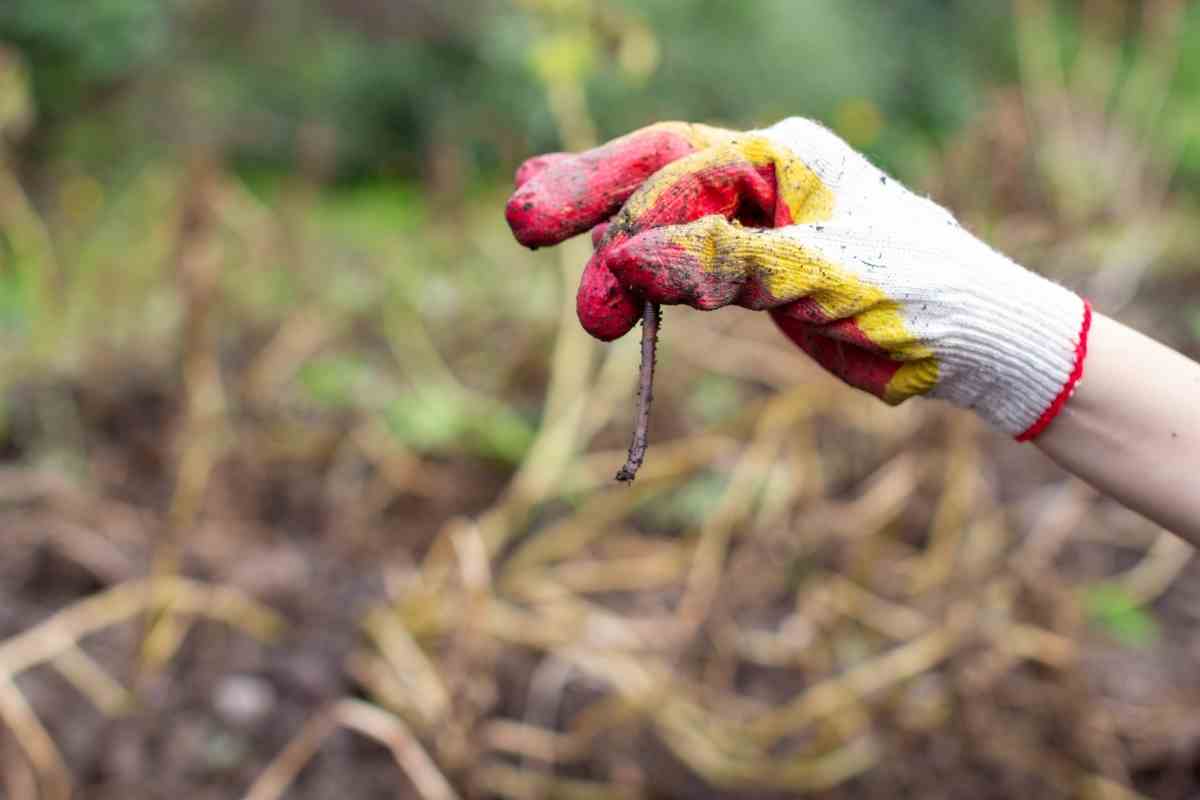The types of worms that you typically find in your garden are none other than earthworms. They are in a mutualistic relationship with the earth, enriching soils with nitrogen, phosphorous, and other nutrients and their ability to decompose.
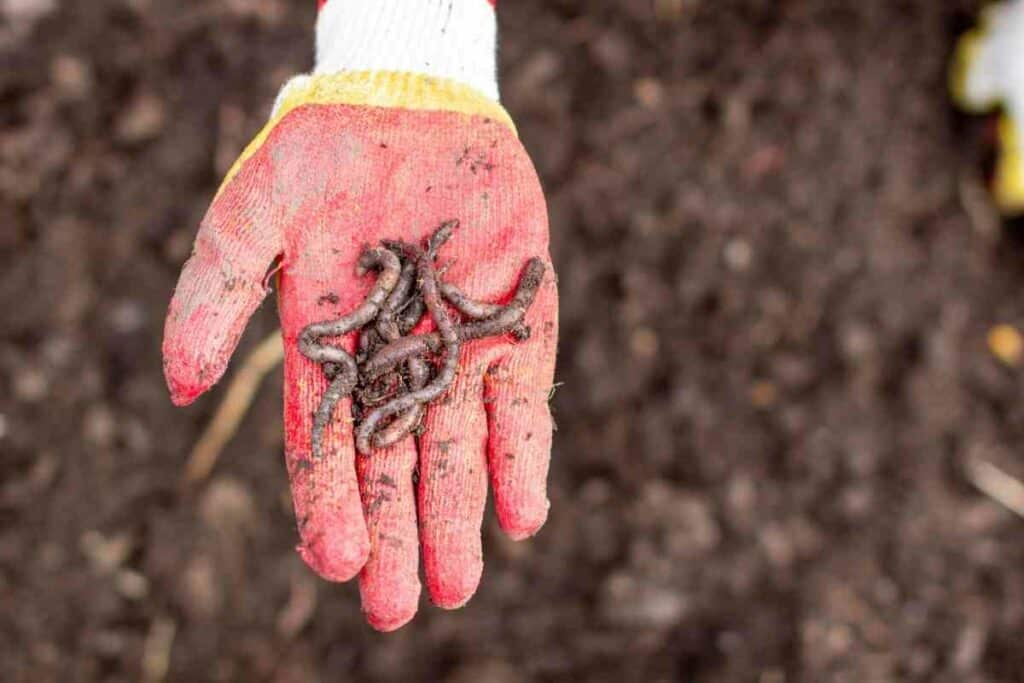
Below, we’ll introduce you to the 3 common types of earthworms that reside in gardens along with a look at the key benefits of having them there.
3 Types of Garden Worms
Garden worms are classified by the habitats that they inhibit, falling into three main categories.
To identify those you have squirming around in your garden, here are some key identifiers and a look at where they reside and what they feed on.
1. Epigeic Garden Worm
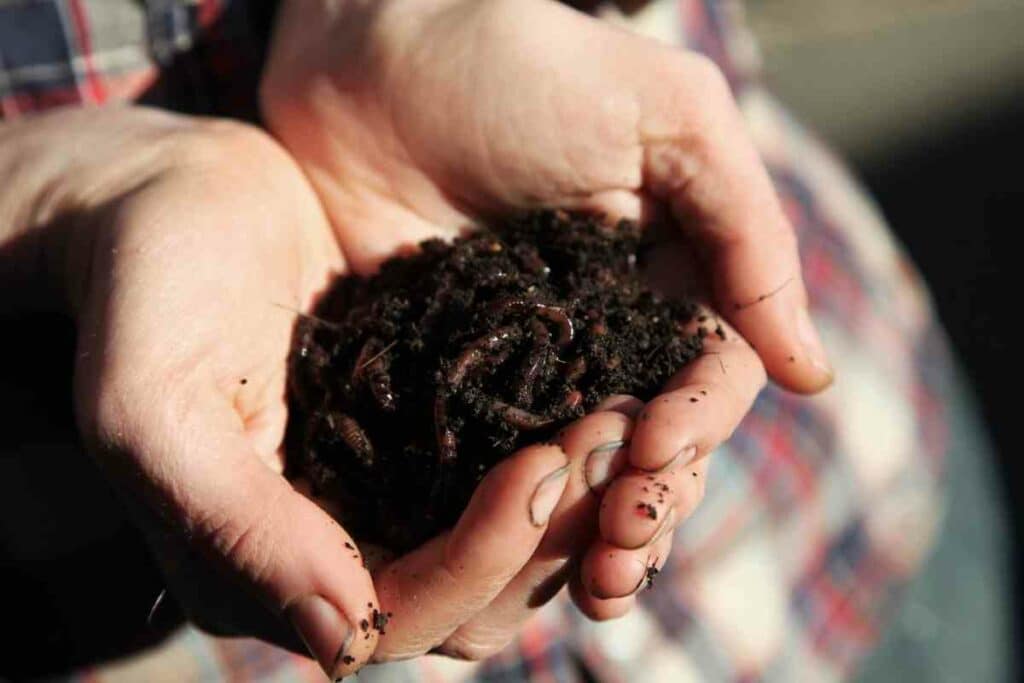
Key Characteristics
- A dark, rich color
- Rapid movements
- Inhabiting the topsoil
- Small in size (between 1 and 7 inches)
The epigeic garden worm is the one that you’re most likely to see.
That’s because they inhabit the surface of soils, working to decay organic matter.
Epigeic garden worms tend to have a darker color than other worms, using it as a way to blend into the earth and protect them from UV.
They survive by residing on the soil surface and feeding on things like leaves or compost heaps.
These worms are the most abundant in gardens and the ones you’re more likely to see when you give your garden a peek.
2. Endogeic Garden Worm
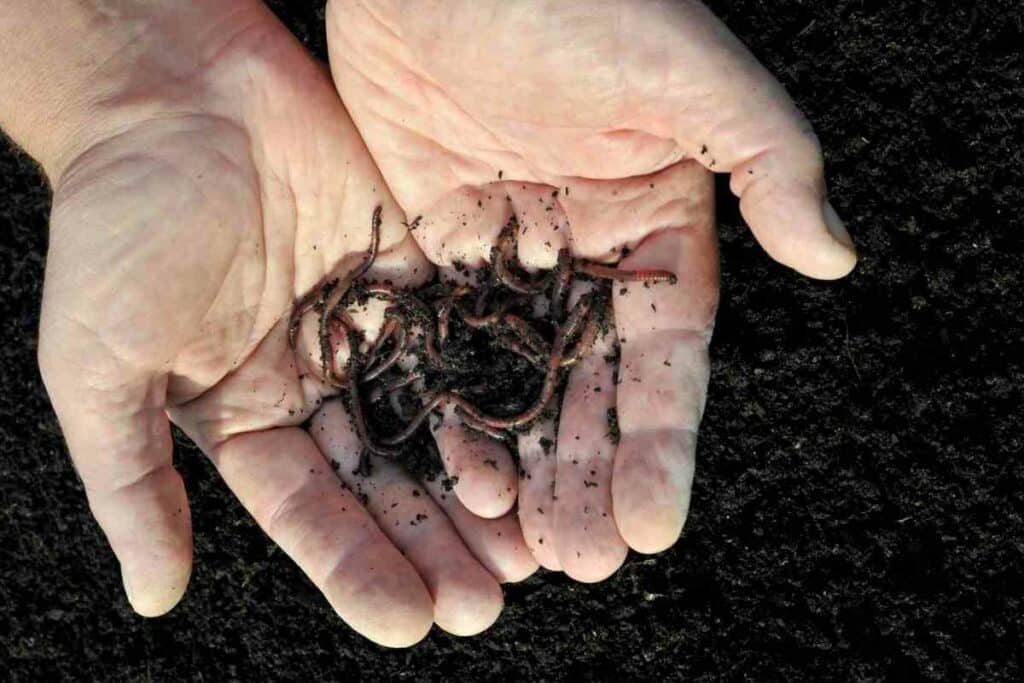
Key Characteristics
- Inhabit the upper layers of soil
- Mostly pale or colorless
- Small (mostly smaller than epigeic)
- Slow movement
Taking things down a notch, the endogeic garden worm tends to make their home within the earth.
They like to burrow into the soil and feed on organic matter, that is until it rains.
You’ll find them coming up from the ground and attempting to get away from the rain before burrowing once again.
3. Anecic Garden Worm
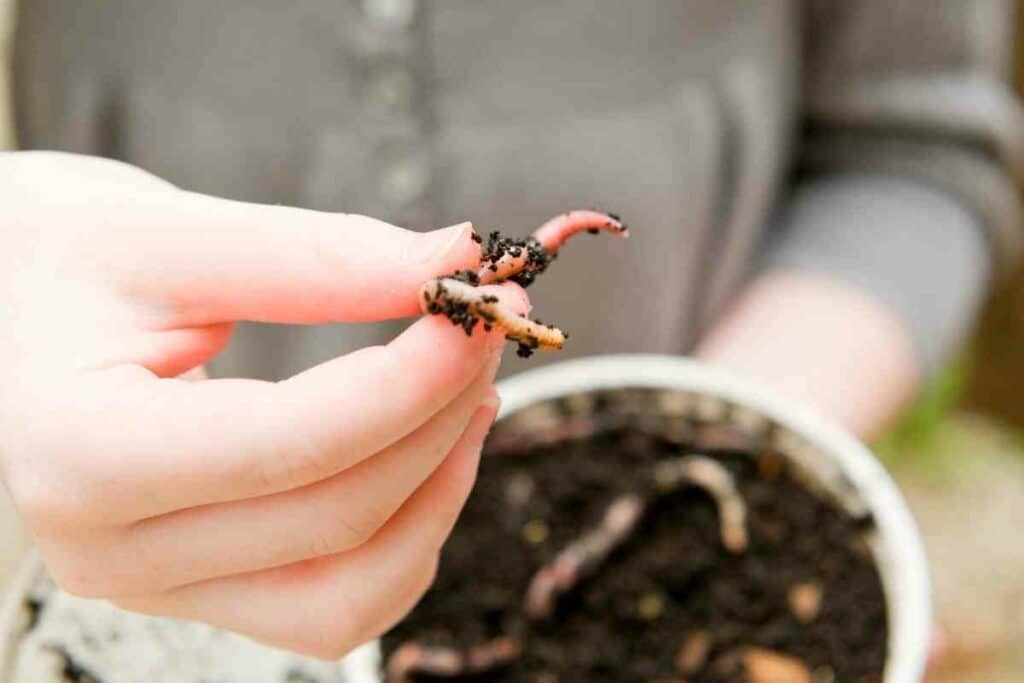
Key Characteristics
- Slowest moving worm
- Milky white color
- Thick diameter
- Come up to feed and then burrow down.
The Anecic garden worm is one that loves to live below the ground but comes out when it’s time to eat.
They feed on organic matter that’s fallen from trees, plants, or is part of the compost.
Anecic worms are generally bigger in size than the other types of garden worms, with a thicker body and longer length.
As far as color, they tend to have a milky white color, only coming up to feed and then burrowing back down at least six inches into the earth.
Are Garden Worms Beneficial?
When you have any slimy creature crawling in your garden, your first thought might be to get rid of it.
However, when it comes to the garden worm, their presence is generally a good sign for the health of your garden.
Garden worms have a number of key benefits for your garden and the soil that’s in it, some of which might take you by surprise.
Support Soil Nutrition
The key benefit of having worms in your garden is their role in enhancing soil nutrition.
The majority of their diet consists of organic and decomposing material, which later gets processed and makes its way back into the earth.

When worms digest this matter, it gets enriched with essential nutrients for plants like nitrogen and phosphorous.
Not only do they deposit these nutrients into the topsoil but also burrow down and enrich deeper layers, supporting healthier and stronger soil immunity.
Decompose Organic Matter
The organic matter that worms decompose later becomes a feast for fungi and bacteria.
Many of these key microbes continue to feed off of and digest organic matter, creating a high level of nutrients for your garden’s soil and all of the plants inhabiting it.
Key Takeaway: While bacteria and fungi often get a bad rep, they are key parts of a healthy soil environment, providing benefits for plants, roots, and microbes like nutrition, defense, and increased tolerance to harsh weather conditions.
Support Root Health
The roots are like a plant’s arteries, stretching and expanding throughout the ground to find nutrients, moisture, and more.
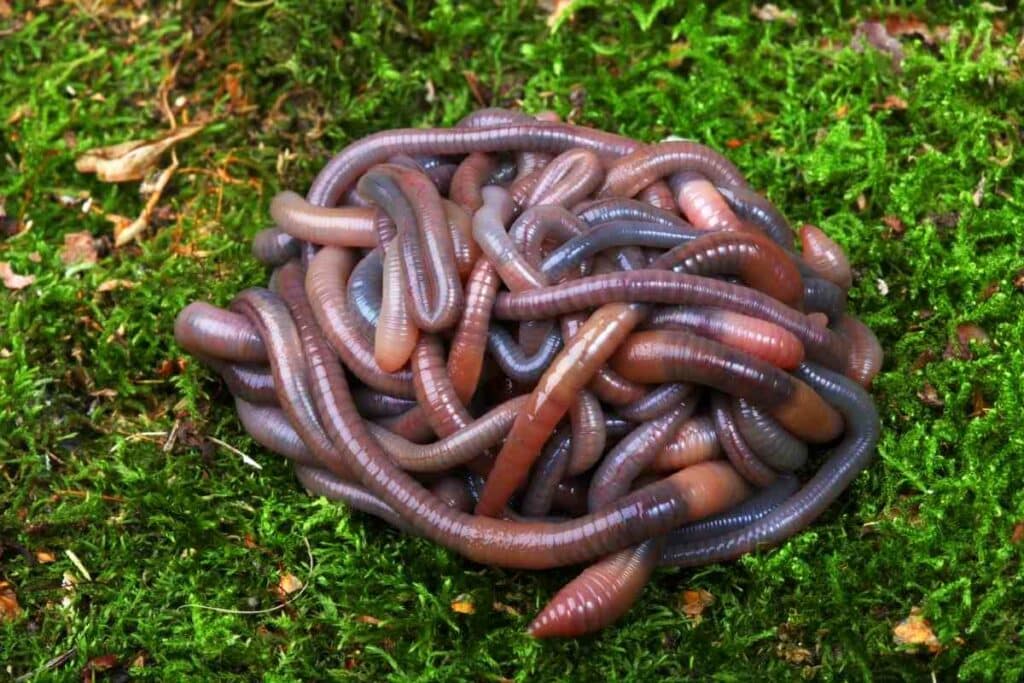
Garden worms help to support root health by aerating the soil during their burrowing acts.
As they make their path into the earth, they create a small opening that allows water and air to get to the roots.
These small openings also help to aerate soils, which can prevent rotting from taking place in the roots and support an overall healthier underground network for your plants.
Part of the Food Chain
Worms are an important part of the food chain, feeding predator species like:
These animals would lose a food source without worms, either dying out or decreasing massively in population while they adapt to finding another.
When you have worms in your garden, you have a complete food chain unfolding before your eyes, with nourishment for plants and food for some of nature’s most necessary species.
How to Keep Your Garden Worms Happy?
Due to all of the key benefits provided when your garden is filled with worms, you should take steps to keep worms thriving and happy.

Garden worms are attracted to certain conditions, a few of which you can control.
Give Them Scraps
Garden worms love to feed on decomposing matter.
Kitchen scraps are a great source of nutrients, though you shouldn’t overdo it.
If you frequently eat fruits and veggies, keep the peel and scraps and toss them in little by little.
This will keep your worms happy and thriving, giving them the things they love.
Keep Moisture in Soil
Just like your plants, worms love the earth when it’s moist and spongy.
To keep the soil moist and spongy, some climates require more water than others.
Depending on the contents of your garden, you may need to add mulch, water, and other key materials to create the perfect ecosystem for garden worms and plants.
Control the Temperature
Garden worms thrive in temperatures that range anywhere from 40-75 degrees.
If you keep your garden in a controlled environment, you may be able to keep the temperature constant.
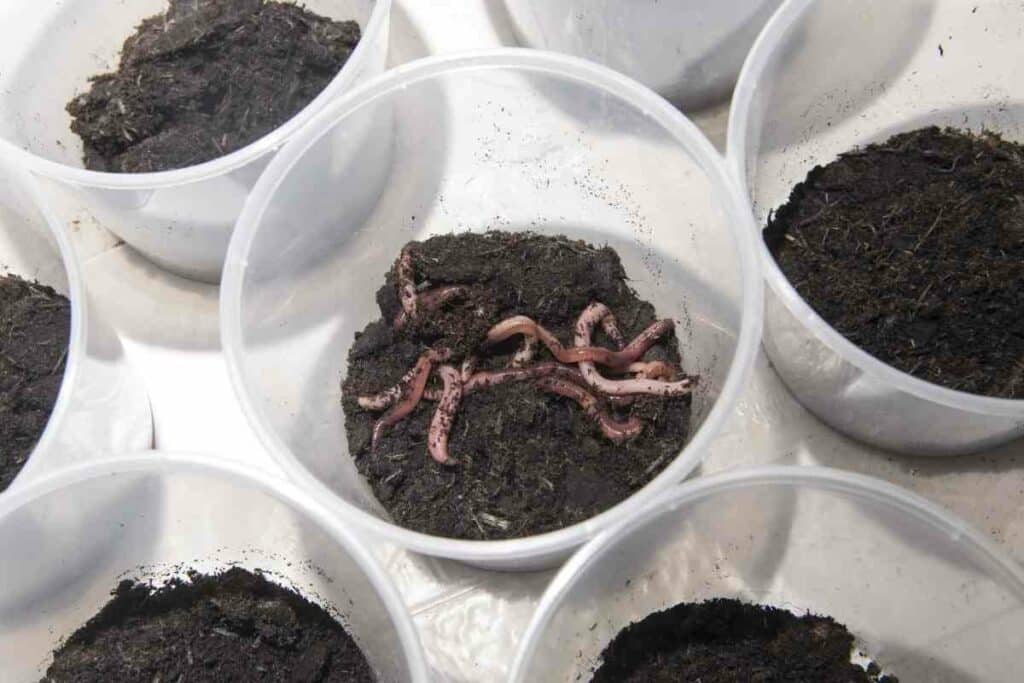
However, if you have your plants outside, you might have to take other measures.
Consider adding a blanket when temperatures drop, adding some kind of heat lamp, and adding things like sticks and leaves.
These materials not only help to seal in moisture but also help regulate temperatures and provide worms with an additional food source.
Even if you can’t control the temperature 100%, you should still consider taking steps to keep your plants and worms warm if you are expecting a severe drop in temperatures.
Final Thoughts
Garden worms are an essential part of every garden. Those with plentiful worms are more nutrient-rich and better adapted to fight off diseases.
Worms provide the plants in your garden with nutrients, additional moisture, and improve conditions for roots.
When you have worms in your garden, you should take steps to keep them healthy, supplying them with the conditions they love.
If you don’t see worms in your garden naturally, you can buy and add them, helping to improve the health of your garden with help from these slimy, wiggly critters.
